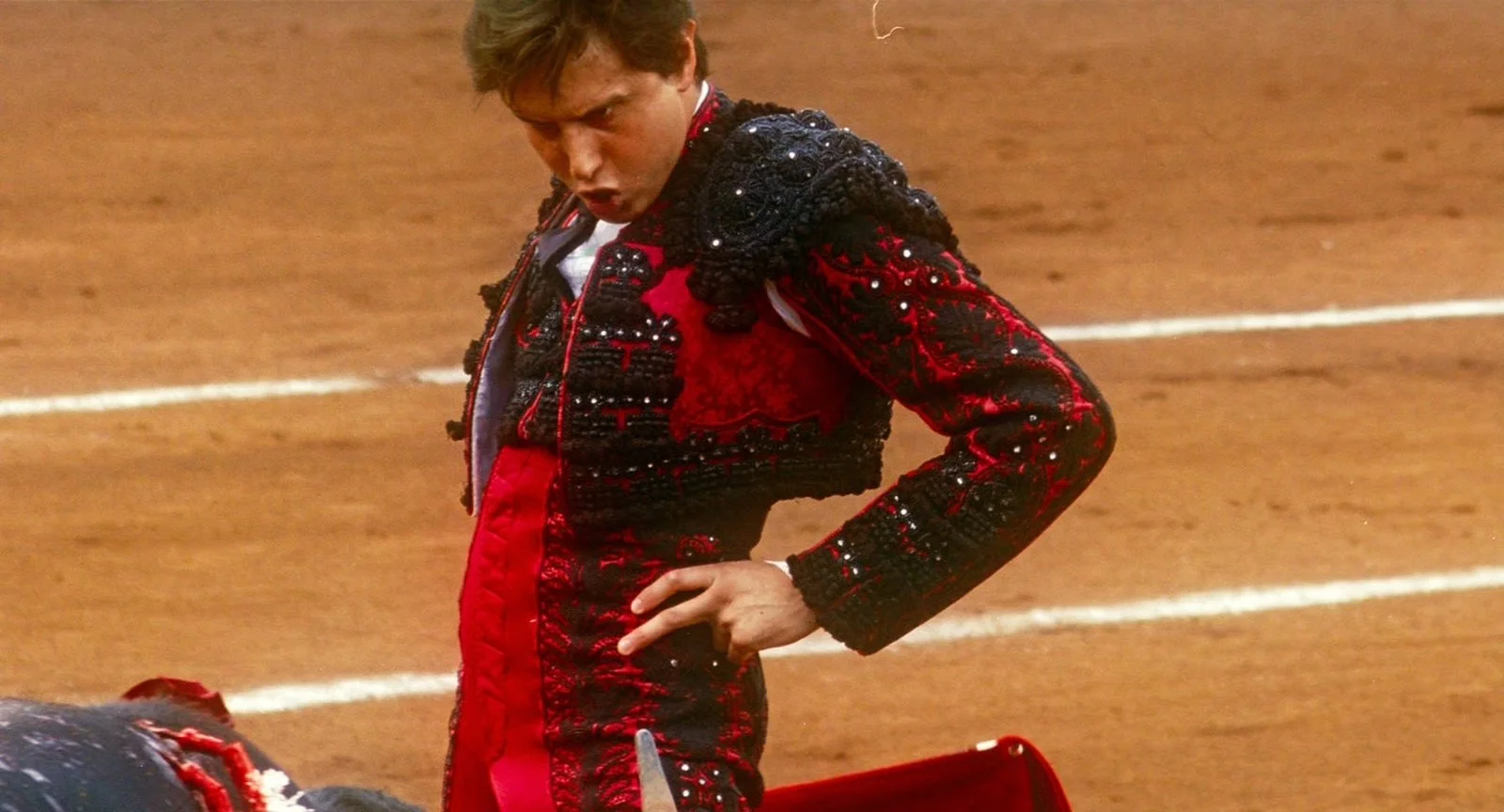Ego, Celebrity and Bulls: Albert Serra's Afternoons of Solitude
What makes a “provocateur”? Do sensationalism and shock value alone justify someone earning that title, or does their work need to amount to something more substantial? Ultimately, the most effective forms of provocative art are those that provoke thought, challenging audiences to reconsider their preconceived notions about the art’s subject.
Catalan filmmaker Albert Serra has a history of interrogating important cultural institutions from today and years past, from modern-day colonialism (Pacifiction) to the French monarchy (The Death of Louis XIV) and the Libertines (Liberté). He always brings a fearless approach, but refuses to give the audience easy and obvious answers to these problems.
In Afternoons of Solitude, Serra’s first feature-length documentary in over a decade (unless you count his nonfiction installation-based project, Singularity), the Spanish filmmaker sets his sights on one of his country’s longest-standing cultural institutions: bullfighting. Serra takes a verité approach to bullfighting, following Peruvian superstar Andrés Roca Rey as he prepares for the ring, participates in the fights, and recovers from the dangerous experience.
Serra is well-known for having a contrasting style that blends both maximalist and minimalist tendencies. While his narratives are often very thin, slowly-paced, and sometimes abstract, his films are often visually exuberant and full of gratuitous content. (Just look at Liberté, one of the most sexually explicit films in recent memory.) The long, uninterrupted stretches of bullfighting sequences in Afternoons of Solitude align closely with Serra’s slow cinema leanings, with most of the film’s dialogue taking place in dressing rooms leading up to these fights or vans as he rides away from the arena after walking out the backstage door to a flurry of adoring fans.
However, it feels as if Serra has reined in his maximalist tendencies — if only for the purpose of this project — and wisely so, as it accentuates the film’s message. Many filmmakers would have gotten caught up in the glitz and glamor of the arena: the flamboyant trajes de luces (“suits of lights”) the bullfighting toreros wear, the adoring crowds, the flurry of motion. Yet Serra chooses to shoot these moments with exceedingly plain cinematography and editing that favors long takes over quick, action-oriented cutting. It’s as if he wanted to purposefully make bullfighting look as boring as possible, eliminating any of the appeal that it would have for uninitiated audiences.
The area in which Serra’s over-the-top tendencies do manifest themselves is the film’s abundance of blood. There are prolonged scenes in the bullfighting arena, showing the damage and harm that the toreros cause to this animal. While audiences are spared from the worst of the worst, we still see bulls getting stabbed, blood flowing, and near-death bulls being dragged out of the arena. It’s an unquestionably tough watch, especially if you are an animal lover.
That being said, don’t dismiss Afternoons of Solitude as a simple “message movie.” Though Serra clearly intends to disturb and shock the audience with what they see, there’s also a deeper layer to the film exploring the subject’s relationship with the blood sport and the audience. It is, at its core, an exploration of ego and celebrity — something that many in countries where bullfighting is not a revered cultural institution may find undeserved.
Still, there is no question that, within the world of professional bullfighting, Rey is — as he is fittingly named — the king of the arena. Afternoons of Solitude shows us how, when he is not in the ring, Rey is constantly showered with the reassurance of his “hype squad” of his managers, assistants, and fellow toreros, along with the fans. One particularly affecting moment sees a fan giving Rey a gift and well-wishes after a fight, something that many might associate more with a pop star or A-list actor than someone who makes their living slaughtering animals for a show.
The other constant reminder we hear repeated throughout the film is that Rey is putting his life on the line. We even see Rey get gored in the ring more than once. But for what? Is it for the entertainment of the thousands of people who continue to pack grandstands in Spain (and many other countries) today? Is it for the merciless torture of an animal that was, in all likelihood, bred and raised for years exclusively for this one moment? Is it because there is some obligation to keep this cultural tradition that has been around for centuries alive?
Indeed, one of the more prominent arguments that proponents of the continuation of bullfighting make to not outlaw the practice is that it is a form of “cultural preservation.” Serra seems totally disinterested in this argument, refusing to bring it up at all. For Serra — as it also seems to be for Rey — the matador is not a hero; he is not valiantly fighting to protect the Spanish identity; he is, first and foremost, an entertainer.
And for the most part, Serra does not cast judgment on Rey — or any other torero, for that matter — for participating in this institution. This is where some might take issue with Serra’s approach. Even though they are just pawns on an unjust board, many would argue that these people are just as responsible or, at minimum, complicit in the perpetuation of this barbaric tradition.
While some might be hoping for Afternoons of Solitude to offer a deeper condemnation of the practice of bullfighting, it’s something much more nuanced and therefore arguably more provocative. Albert Serra, the iconoclast he is, knows that the images he presents speak for themselves. He doesn’t need to spoon-feed the audience to tell them why bullfighting is bad (or why some argue it may not be). He just needs to show the audience what is happening and they will come to their own conclusion.
If you enjoyed this article, please consider becoming a patron of Hyperreal Film Journal for as low as $3 a month!




Sean is a film critic, filmmaker, and life-long cinephile. For as long as he can remember, he has always loved film, but he credits the film Pan's Labyrinth as having started his love of film as art. Sean enjoys watching many types of films, although some personal favorite genres include music documentaries, heist movies, and experimental horror.